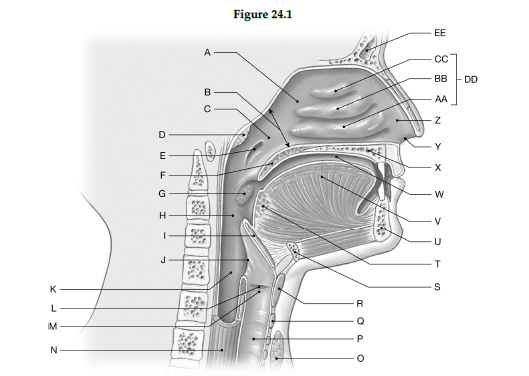Antigen-presenting cells usually display processed antigens to T cells in the ________.
A. liver
B. red bone marrow
C. lymph nodes
D. thymus
E. blood plasma
Answer: C
You might also like to view...
You have type B positive blood. What are all the types of packed RBCs you can receive?
A) A positive and A negative B) B positive and B negative C) A positive and B positive D) B positive, B negative, O positive, O negative E) O positive and O negative
Which of the following elements is found in all organic molecules?
A) nitrogen B) oxygen C) iron D) carbon E) copper
Using the figure below, identify the labeled part.

1) Label A: ______________________________
2) Label B: ______________________________
3) Label C: ______________________________
4) Label D: ______________________________
5) Label E: ______________________________
6) Label F: ______________________________
7) Label G: ______________________________
8) Label H: ______________________________
9) Label I: ______________________________
10) Label J: ______________________________
11) Label K: ______________________________
12) Label L: ______________________________
13) Label M: ______________________________
14) Label N: ______________________________
15) Label O: ______________________________
16) Label P: ______________________________
17) Label Q: ______________________________
18) Label R: ______________________________
19) Label S: ______________________________
20) Label T: ______________________________
21) Label U: ______________________________
22) Label V: ______________________________
23) Label W: ______________________________
24) Label X: ______________________________
25) Label Y: ______________________________
26) Label Z: ______________________________
27) Label AA: ______________________________
28) Label BB: ______________________________
29) Label CC: ______________________________
30) Label DD: ______________________________
31) Label EE: ______________________________
Spinal interneurons inhibit antagonist motor neurons in a process called
A) a crossed extensor reflex. B) a stretch reflex. C) a tendon reflex. D) reciprocal inhibition. E) reverberating circuits.